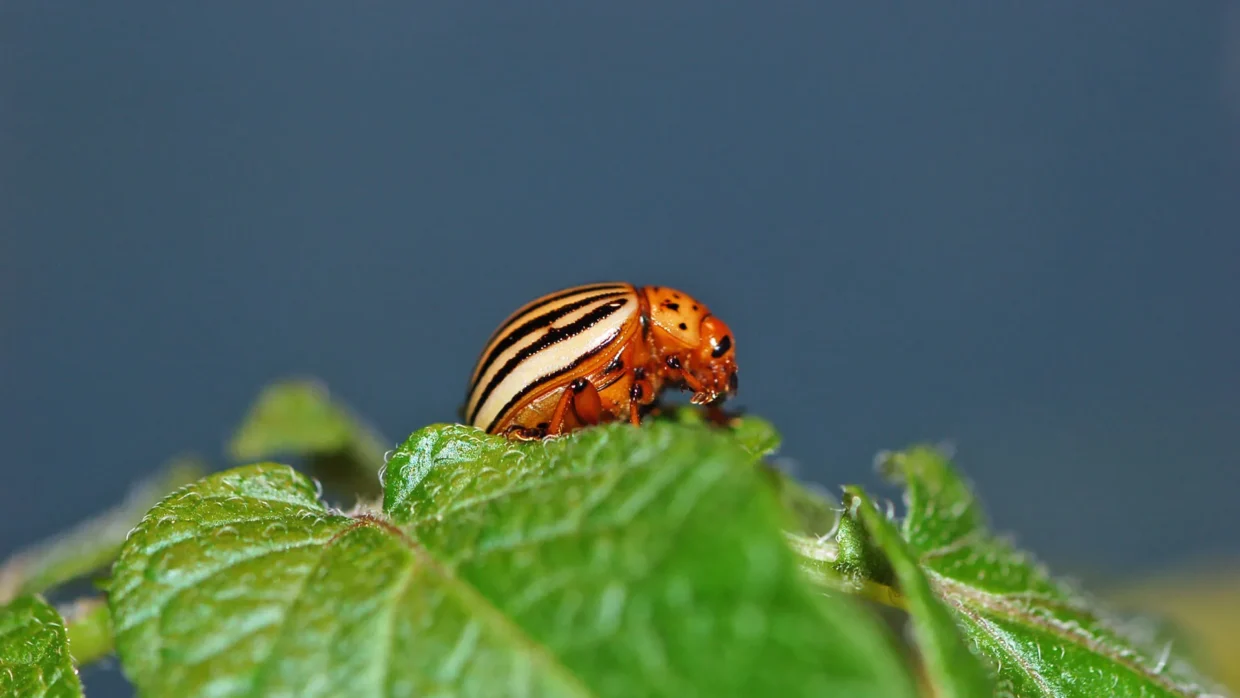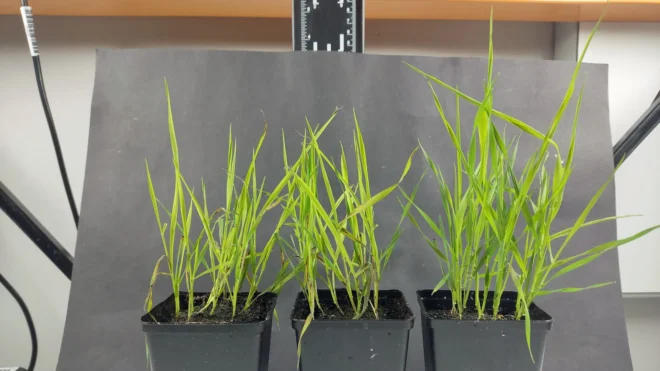It is a common mechanism in nature: When living organisms are confronted with a virus, many recognise its RNA – the genetic material which allows viral proteins to be produced – and block it from working in the host cell. This reaction (RNA interference, RNAi for short) was first used in the laboratory in 1998. Researchers switched off specific genes in nematodes using synthetically produced double-stranded RNA derived from the worms’ own genetic material. The scientists were awarded a Nobel Prize in Medicine for this procedure.
First field trials in Europe
In light of dwindling chemical options, RNAi is increasingly becoming a focal point in crop protection. “Following the neonicotinoid ban, there is no longer any alternative to combating aphids responsible for transmitting yellowing viruses,” says Professor Andreas Vilcinskas, insect researcher at the Fraunhofer Institute for Bioresources in Giessen, Germany.
In recent years, emergency authorisations for neonicotinoids have been increasing in Germany. To reduce future reliance on emergency measures, the ViveBeet project was launched at the Fraunhofer Institute. The aim was to develop an RNAi spray to combat aphids in sugar beet. “We are contributing our expertise in insect genetics,” explains Andreas. “A formulation has already been developed, and a patent has been applied for.” The Julius Kühn Institute and the Institute for Sugar Beet Research are also involved in ViveBeet, which began initial field trials in 2024, with encouraging results.
How do RNAi insecticides work?
An organism’s DNA – its genetic blueprint – is copied in cells as messenger RNA (mRNA), which is the template for production of vital proteins. This mRNA is normally single-stranded and the ribosomes read it to produce proteins. However, if the cell encounters double-stranded RNA – typical of viruses – it recognises an anomaly. Specialised enzymes cut the RNA into small fragments that bind to the corresponding, sequence-identical mRNA and block its translation. Researchers use precisely this mechanism to silence the genes of the target insect.
Less than 10g per hectare
Aphids, cicadas, beetles – there is no shortage of target organisms. The first step is to use bioinformatic methods to identify which genes, when silenced, lead to the death or sterilisation of an insect. The effects of different doses of double-stranded RNA (dsRNA) are then tested by microinjection or ingestion.
In the past, work at the Fraunhofer Institute has contributed to the development of the first RNAi spray for combating the Colorado potato beetle. This was approved in the US in 2023. Manufacturer Greenlight Bioscience states that it achieves an effect comparable to that of conventional insecticides at an application rate of just 9.9g/ha. It is applied in the same way as a conventional spray, and the company says leaf loss remained below 10% in field trials in 2020.

A barrier against resistance
One of the strengths of the technology is that resistance to dsRNA can be largely avoided. “The advantage over normal chemical pesticides is the possibility of combining active ingredients,” explains Professor Karl-Heinz Kogel from the Institute of Phytopathology at JLU Giessen. He is one of the pioneers of using RNAi in crop protection. “As a rule, we don’t just target a single gene, but five to 10. Of course, you can never completely rule out the possibility of resistance developing, but the probability of several mutations occurring simultaneously is extremely low.”
High selectivity
Another benefit of these substances lies in their high specificity. As Karl-Heinz emphasises, the molecules are theoretically harmless to non-target organisms, provided that their genetic material has been carefully matched alongside mortality tests. Nevertheless, the method raises concerns among environmentalists, especially as the public often associate it with genetic engineering. “But these are not GMOs, as no genetic material is altered in the target organism,” emphasises Andreas.
They are not GMOs, as no genetic material is altered in the target organism.
Prof. Andreas Vilcinskas

Comprehensive studies on ecological safety are still lacking. However, initial research on pollinators or closely related insect species, for example, shows no negative effects. Although the entire diversity of a field ecosystem cannot be tested for genetic similarities, these selective molecules open up new avenues for more targeted control that potentially conserves biodiversity.
In addition, it could become a weapon against the main enemy of the bee – the Varroa mite. “RNAi is an innovative strategy for combating certain arthropods while at the same time protecting bees and the environment,” says Dr Delphine Goven from the University of Angers in France. As part of the ParaGluRSite project, she is working on identifying proteins to develop dsRNA molecules that target the Varroa’s vital genes, as well as other arthropods like ticks and aphids.
Reduced production costs
The same applies to the risk to human health: “In principle, dsRNAs are not harmful to the environment, as RNA molecules are very unstable and rapidly biodegradable,” says Karl-Heinz. The Minnesota Department of Agriculture determined a half-life in water of one to two days for a molecule marketed in the US – almost a hundred times shorter than that of some chemical agents.
In principle, dsRNAs are not harmful to the environment, as RNA molecules are very unstable and rapidly biodegradable.
Prof. Karl-Heinz Kogel
However, it is precisely this instability that poses a challenge in field applications. In order for RNA to remain effective for the required time, it must be protected –from UV radiation, moisture, or the digestive enzymes of insects. This usually requires encapsulation in nanoparticles or embedding in polymer complexes. The high technical complexity – combined with regulatory uncertainties and questions about the environmental impact of these RNA complexes – is currently slowing down investment in Europe.
And yet, the Colorado potato beetle spray, Calantha, demonstrates that the approach can be viable – at a price of around one dollar per gram. For comparison, just 15 years ago, the price of RNAi in laboratories was over 12,000 dollars per gram. “RNA research in Europe is on the upswing, with numerous projects and applications for authorisation,” says Andreas. Much will depend on the political will – but the need is undeniable: “The farmers I speak to feel disarmed because they have fewer and fewer crop protection products at their disposal”.
More than just insecticides?
In principle, RNAi technology is effective against almost all types of pathogens or pests in the laboratory. “The question is: How do you get the substance to where it is supposed to work?” explains Karl-Heinz Kogel. “Double-stranded RNA could also be an excellent herbicide – provided we can find a technology to reliably introduce it into the plant.”

At Justus Liebig University in Giessen, for example, researchers are testing high-pressure sprayers that create microscopically small lesions on the leaf surface, allowing the RNA molecules to enter. A comparable process would also be interesting for combating viruses – an area in which RNAi is particularly promising, as it imitates precisely this natural immune response.
“With regard to bacteria, we don’t know enough about the mechanism of gene silencing here yet,” says Karl-Heinz. “The potential with fungi is much greater – we’ve already had good success in the laboratory here.” However, the technique remains most effective in insects, as at least some insect groups ingest RNA through their food and have special proteins to absorb double-stranded RNA in the gut.
